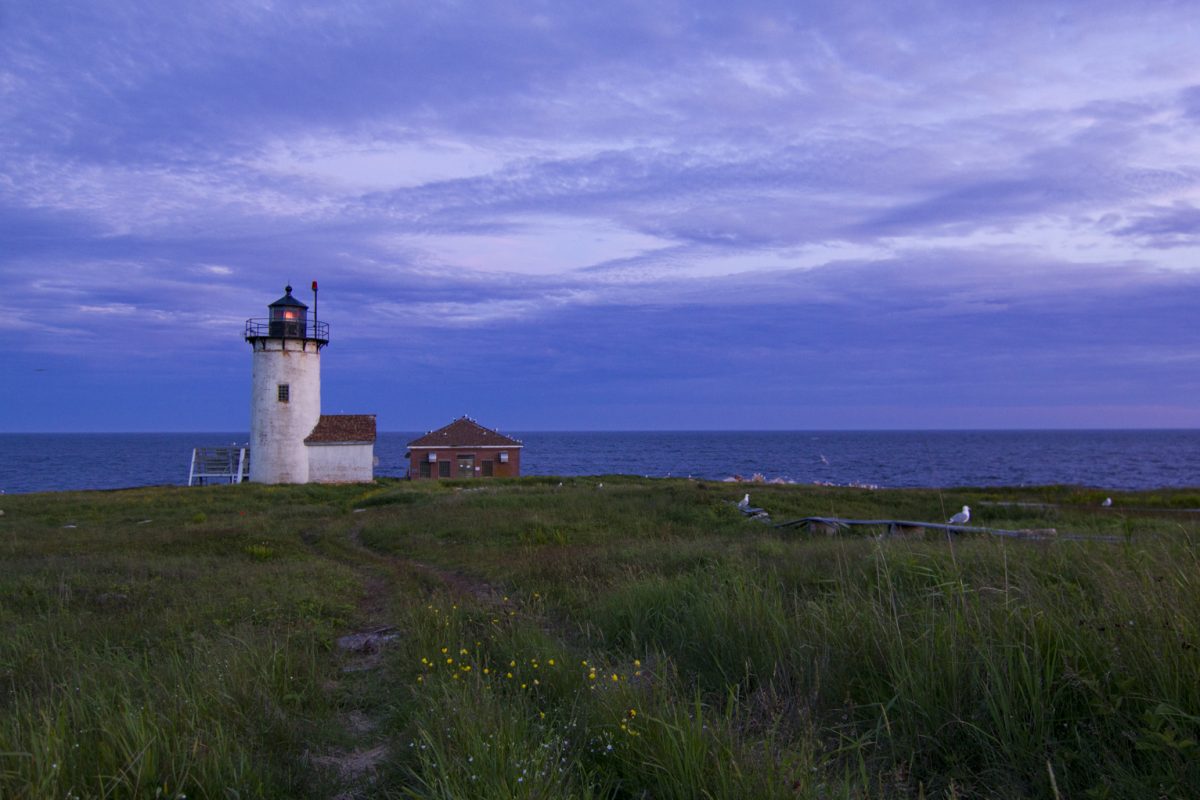A Summer Sojourn
On Great Duck Island, the field researchers from College of the Atlantic are temporary summer visitors. But they are not the only ones. Almost all of the birds who rely on the small protected island in the Gulf of Maine for breeding, nesting, and raising young are only summer visitors themselves.
June 2017. The end of my second year at College of the Atlantic in Bar Harbor, Maine. After I wrote my human ecology essay and finished spring term, I hopped on the M/V Osprey to Great Duck Island—a haven for nesting seabirds. The island is about 10 miles southeast of Mount Desert Island, Maine, where College of the Atlantic and Acadia National Park are located.

The professor of ecology at College of the Atlantic, John Anderson, manages the college’s Alice Eno Research Field Station on Great Duck Island. The 1890 Coast Guard light keeper’s residence houses the research station.

The Coast Guard automated the lighthouse in 1986, making the lighthouse keeper’s job unnecessary. The government then sold light stations across the country like the one on Great Duck to other government agencies or colleges and universities. In 1997, College of the Atlantic acquired the light station and residence to establish the Alice Eno Research Station. Today, College of the Atlantic owns a few acres on Great Duck Island while the Nature Conservancy owns almost all of the remainder.

A Hotspot for Seabird Research
For almost two decades, undergraduate and graduate researchers from College of the Atlantic have studied the island’s wildlife. Researchers prioritize monitoring the island’s breeding herring gull population and the growth of the gull chicks.

The value of Great Duck Island as a research destination dates to Arthur Cleveland Bent. Bent was a naturalist who published Life Histories of North American Birds: Gulls and Terns in 1921. Bent takes much of his information on herring gulls from studies on Great Duck Island in the early 1900s. The nesting herring gull colony on the island is one of the largest on the eastern seaboard. The number of breeding gull pairs has declined from around 2,500 in Bent’s time to 1,300 today.

I’m fortunate enough to have the opportunity to help build on years of field research at Great Duck Island. This field season, I’m assisting with banding, measuring, and counting herring gulls. I’m also leading my own songbird survey of the island.

Tower Counts
One tradition of the summer research season is to climb the lighthouse every morning at 7:00am and count all birds in sight—360 degrees around the tower platform. Everyday from the tower we see herring gulls, great black-backed gulls, black guillemots, and common eiders, all species nesting on the south end of the island.

Although they are at the southern extreme of their breeding range, Atlantic puffins appear frequently during counts. Puffins have even nested on the south end of the island in the past. Double-crested cormorants, razorbills, northern gannets, common terns, and common loons are other seabirds occasionally noted during tower counts.

By the end of July, as many young birds fledge, so too will the College of the Atlantic field researchers. When another chaotic nesting season passes, Great Duck Island will have served its vital purpose to thousands of birds, many of whom will return next summer.
